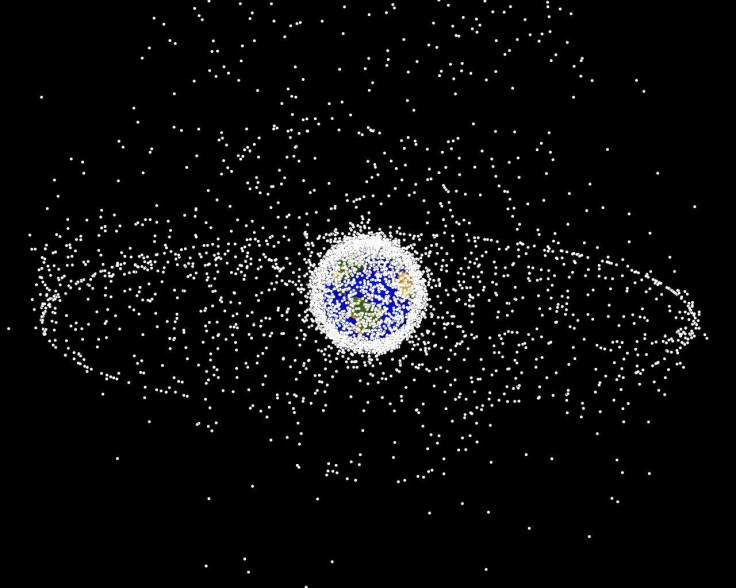Space Junk Removal: Harpoons, Nets Could Get Rid Of Debris Surrounding Earth

Space junk, or the debris surrounding our planet, is one of the most pressing concerns for modern space agencies. The chunk of garbage, from discarded rocket boosters, defunct satellites and space stations, is orbiting just a few miles above our planet and we have no way to deal with it, at least as of now.
Moving at 17,500 miles per hour, even a tiny fleck of these objects can damage an operational spacecraft, and at present, we have some 7,500 tonnes of junk to remove. The threat is clear here — space debris could prove catastrophic and jeopardize future missions, even those to Mars and beyond unless removed in time.
Several scientists across the globe are working on different ways to remove space junk but leading the race is a group of European researchers who plan to clear the garbage using a harpoon, net, and drag sail.
The so-called RemoveDEBRIS satellite comes from University of Surrey, United Kingdom, and is backed by the European Commission. It launched last week via SpaceX Falcon 9 and is currently aboard International Space Station, waiting to be deployed as part of an Active Debris Removal mission.
Here, the washing machine-sized satellite will demonstrate if the technologies developed by the researchers are good enough to monitor, track, grasp, and get rid of space junk, Space.com reported.
As legal restrains kept the researchers from using defunct space debris present in space, the team sent two tiny cubesats into space as their own “space junk.” During the demo, one of these satellites will be used to show how the camera and Light Detection and Ranging tech bundled with the system works to monitor and characterize debris, while the other will be captured and locked within a net.
Meanwhile, the 30 cm (11.8 inches)-long harpoon will be fired at a fixed target plate which will be deployed from the main satellite. This would show how the projectile works and hits a target under the impact of microgravity so that it could be reeled back on a rope.
Once this is done, the mission will be concluded with the deployment of a large drag sail. This membrane will wrap RemoveDEBRIS satellite and pull it down into Earth’s atmosphere so that it could burn faster than normal.
“It is important to remember that a few significant collisions have already happened. Therefore, to maintain the safety of current and future space assets, the issue of the control and reduction of the space debris has to be addressed," Professor Guglielmo Aglietti, Director of the Surrey Space Centre at the University of Surrey, said in a statement. “We believe the technologies we will be demonstrating with RemoveDEBRIS could provide feasible answers to the space junk problem - answers that could be used on future space missions in the very near future.”
© Copyright IBTimes 2024. All rights reserved.





















